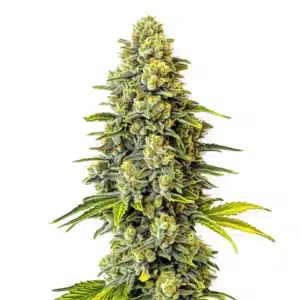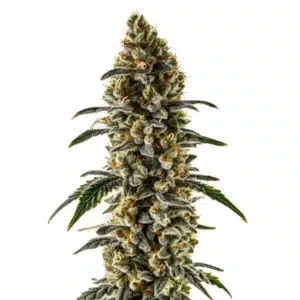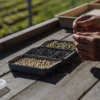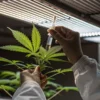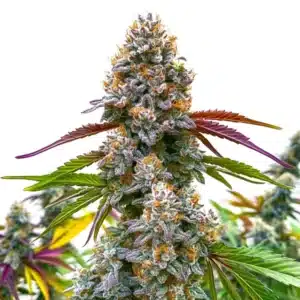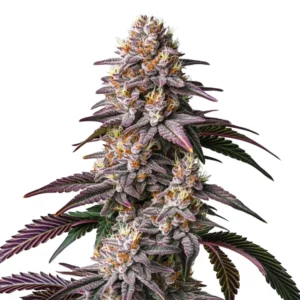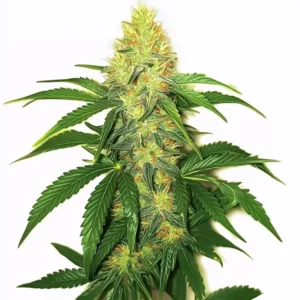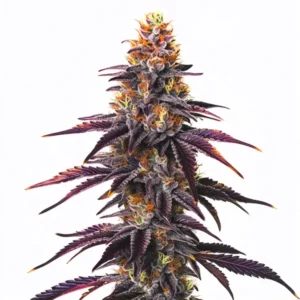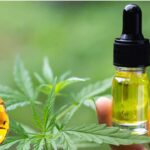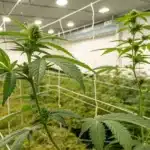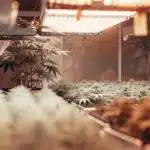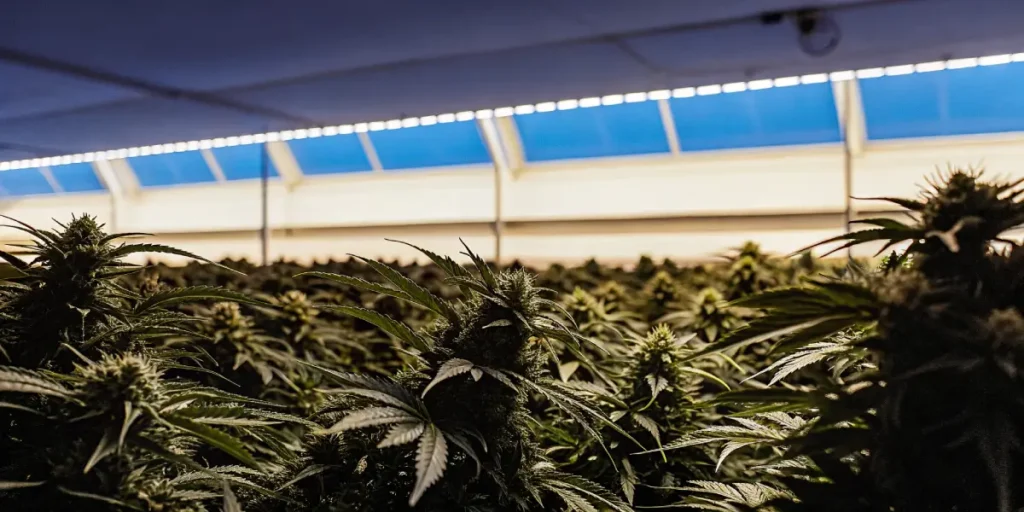
Advanced Cannabis Growing Techniques
Growing cannabis can be a rewarding experience for both first-time growers and seasoned cultivators. Advanced cannabis growing techniques open the door to increased yields, better quality, and a more sustainable farming practice. The key is to understand each plant’s needs and tailor your approach accordingly. Whether you’re using organic cannabis cultivation methods or exploring hydroponic cannabis growing systems, there’s always room for innovation.
One essential technique is to ensure optimal nutrient uptake. This means providing the right balance of nutrients at each stage of the plant’s life cycle. Regularly monitoring pH levels and the electrical conductivity of your growing medium can aid in optimizing cannabis plant nutrient uptake. In addition, the use of advanced LED lighting for cannabis can make a significant difference in plant growth and energy efficiency.
Recommended Strains
GG4
|
|
THC | 27% (High) |
|
|
Type | Feminized |
|
|
Yield | High |
|
|
Phenotype | 40% Indica / 60% Sativa |
Blue Dream
|
|
THC | 17% - 24% (Medium) |
|
|
Type | Feminized |
|
|
Yield | High |
|
|
Phenotype | 50% Indica / 50% Sativa |
Sustainable cannabis farming practices are becoming increasingly popular as growers look to minimize their environmental impact. Techniques such as water recycling, composting, and using renewable energy sources are worth considering. These practices not only benefit the environment but can also improve the overall health and quality of your cannabis plants.
Organic Cannabis Cultivation Methods
Organic cannabis cultivation methods focus on working with nature rather than against it. This approach relies on natural fertilizers and pest control methods. Compost is one of the most common organic fertilizers, providing a rich source of nutrients for cannabis plants. Worm castings, bat guano, and fish emulsion are also popular choices.
Companion planting can also play a significant role in organic cultivation. By planting beneficial plants alongside cannabis, you can naturally deter pests and enhance soil quality. For example, marigolds and basil can help repel insects, while clover and alfalfa improve nitrogen levels in the soil.
Incorporating organic cannabis cultivation methods into your routine can lead to healthier plants and more flavorful buds. By avoiding synthetic chemicals, you promote a more natural growing environment that supports a diverse ecosystem. This not only benefits the cannabis plants but also the surrounding flora and fauna, encouraging biodiversity.
Emphasizing soil health is another pillar of organic cannabis cultivation methods. Techniques such as no-till farming and cover cropping can enhance soil structure and fertility. By maintaining a living soil teeming with beneficial microbes, you provide a supportive environment for your cannabis plants to thrive.
Promos & Deals
Hydroponic Cannabis Growing Systems
Hydroponic cannabis growing systems offer a soil-free way to cultivate plants. This method allows for precise control over nutrient levels and can lead to faster growth rates. In a hydroponic setup, cannabis plants grow in a nutrient-rich water solution, often supported by inert media like clay pellets or rockwool.
There are several types of hydroponic systems, including Deep Water Culture (DWC), Nutrient Film Technique (NFT), and Aeroponics. Each offers different benefits and complexities. DWC, for example, is known for its simplicity and effectiveness, making it a popular choice for many growers.
Hydroponic cannabis growing systems can significantly boost yield and efficiency by eliminating soil-borne diseases and pests. This creates a healthier growing environment that allows plants to focus energy on growth and resin production. The ability to fine-tune nutrient delivery ensures optimal conditions for each stage of development.
Adopting hydroponic cannabis growing systems can also contribute to sustainable cannabis farming practices by conserving water and reducing runoff. These systems recycle nutrient solutions, minimizing waste and environmental impact. As technology advances, hydroponics continues to evolve, offering even more sustainable and productive options for growers.
Optimizing Cannabis Plant Nutrient Uptake
Success in advanced cannabis growing techniques often hinges on nutrient management. Monitoring the pH of your water and nutrient solution is crucial. Cannabis plants typically prefer a pH range of 5.5 to 6.5. Staying within this range ensures that nutrients are readily available for uptake.
Regularly checking and adjusting the electrical conductivity (EC) of your nutrient solution can also help optimize cannabis plant nutrient uptake. An EC meter measures the concentration of nutrients in your solution, allowing you to make necessary adjustments. Overfeeding can lead to nutrient burn, while underfeeding can stunt growth.
Optimizing cannabis plant nutrient uptake also involves understanding the specific needs of your chosen strain. Different strains may have unique nutrient requirements, and tailoring your approach can lead to better results. Advanced cannabis growing techniques often involve experimenting with nutrient schedules to find the perfect balance.
Incorporating both organic and synthetic nutrients can provide a more comprehensive nutrient profile for your plants. This hybrid approach ensures that immediate needs are met while also supporting long-term soil health and sustainability, aligning with broader sustainable cannabis farming practices.
Advanced LED Lighting for Cannabis
Lighting plays a crucial role in cannabis cultivation. Advanced LED lighting for cannabis has become a game-changer, offering energy efficiency and precise control over light spectrums. LEDs are more cost-effective in the long run, reducing electricity bills and heat output compared to traditional lights.
When choosing LED lights, consider the light spectrum they offer. Full-spectrum LEDs mimic natural sunlight, promoting robust plant growth. Adjustable spectrum LEDs allow you to tailor the light to different growth stages, from vegetative to flowering.
Advanced LED lighting for cannabis not only enhances growth but also supports sustainable cannabis farming practices by reducing energy consumption. The lower heat output of LEDs minimizes the need for additional cooling systems, further reducing energy costs and environmental impact.
With the ability to customize light cycles and intensity, advanced LED lighting for cannabis empowers growers to optimize conditions for each growth phase. This level of control can lead to increased yields and improved cannabinoid profiles, making it an essential tool in advanced cannabis growing techniques.
Sustainable Cannabis Farming Practices
Sustainability is at the heart of many advanced cannabis growing techniques. Water conservation is a significant consideration, with techniques like drip irrigation and rainwater harvesting gaining popularity. These methods ensure plants receive adequate hydration without waste.
Energy use is another area where sustainability can be improved. Solar panels and wind turbines are excellent options for reducing reliance on traditional power sources. These renewable energy solutions can significantly lower the carbon footprint of a grow operation.
Sustainable cannabis farming practices also involve reducing chemical inputs and embracing natural pest management strategies. By fostering a balanced ecosystem, growers can minimize the need for synthetic pesticides and fertilizers, leading to healthier plants and cleaner final products.
Implementing sustainable cannabis farming practices not only benefits the environment but also enhances the reputation of your operation. Consumers are increasingly drawn to products that prioritize environmental responsibility, and adopting sustainable methods can set your cannabis apart in a competitive market.
- Utilize organic fertilizers like compost and worm castings for better soil health.
- Implement hydroponic systems for precise nutrient control and faster growth.
- Monitor pH and EC levels to optimize nutrient uptake and avoid deficiencies.
- Invest in advanced LED lighting for energy-efficient, tailored growth environments.
- Adopt sustainable practices like water recycling and renewable energy sources to minimize environmental impact.
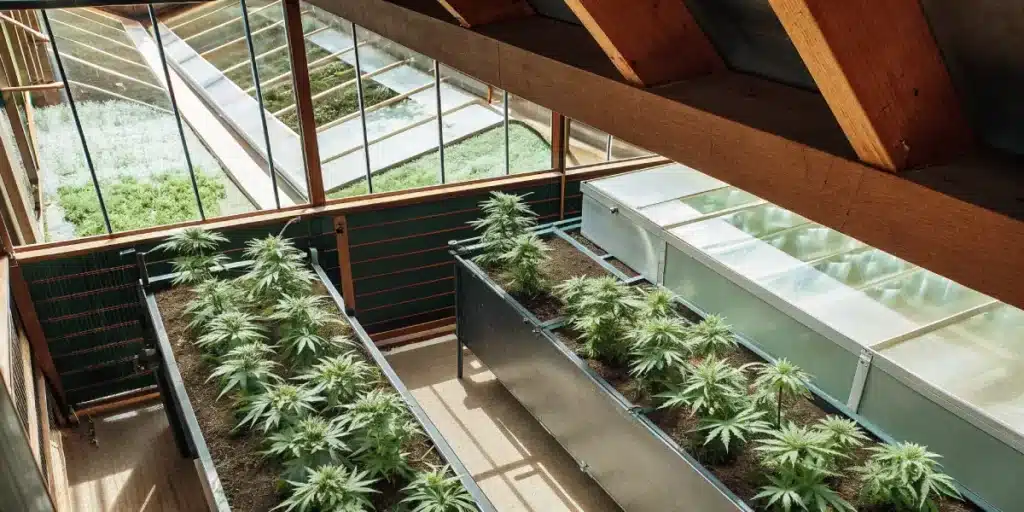
Recommended Cannabis Strains
Blimburn Seeds offers a variety of strains that thrive under advanced cannabis growing techniques. Here are three to consider:
Gorilla Glue 4
Gorilla Glue 4 is an excellent choice for hydroponic systems. Known for its potent effects and robust growth, it responds well to precise nutrient management. This strain can produce high yields of resin-rich buds, making it a favorite among experienced growers.
Its resilience to pests and disease makes it suitable for organic cannabis cultivation methods. With a balanced mix of indica and sativa genetics, Gorilla G offers a versatile growing experience.
When using advanced LED lighting for cannabis, Gorilla Glue 4’s dense buds and vibrant foliage benefit from tailored light spectrums. This strain is ideal for those seeking a rewarding cultivation journey.
Gorilla Glue 4’s adaptability to various advanced cannabis growing techniques makes it a standout choice for growers looking to push the boundaries of yield and potency. Its robust nature ensures it can thrive under diverse conditions, making it an excellent candidate for experimentation with different growing methods.
Blue Dream
Blue Dream is a popular strain that performs well in various growing environments. Its adaptability makes it a great candidate for sustainable cannabis farming practices. The strain’s sativa-dominant genetics result in tall, sprawling plants with impressive yields.
In hydroponic cannabis growing systems, Blue Dream’s rapid growth and high resin production stand out. Regular nutrient monitoring is key to maximizing its potential. This strain is known for its sweet berry aroma and balanced effects.
When optimizing cannabis plant nutrient uptake, Blue Dream responds well to a diverse nutrient regimen. This ensures robust growth and potent buds, making it a favorite among both novice and experienced growers.
Blue Dream’s resilience and performance under advanced cannabis growing techniques make it a reliable choice for those seeking consistent results. Its ability to thrive in both organic and hydroponic setups highlights its versatility and robustness.
Critical Daddy Purple
Critical Daddy Purple is a strain that thrives under advanced cannabis growing techniques. Its indica-dominant genetics lead to compact, bushy plants with dense buds. This strain is perfect for growers looking to optimize space and yield.
Using organic cannabis cultivation methods enhances Critical Daddy Purple’s natural flavors and aromas. Companion planting and natural pest control methods can further boost its growth and resilience.
In terms of lighting, advanced LED lighting for cannabis enhances this strain’s vibrant colors and resin production. Critical Daddy Purple is a testament to the power of combining traditional and modern growing techniques.
Critical Daddy Purple’s compact structure makes it ideal for indoor setups where space is limited. Its ability to produce high-quality yields under various advanced cannabis growing techniques underscores its value to both commercial and hobby growers.
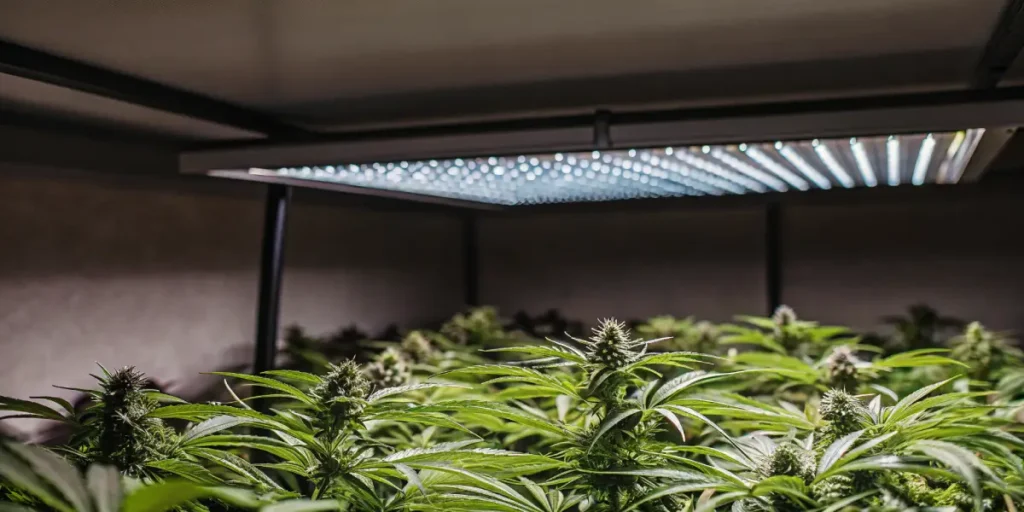
Frequently Asked Questions
What are the benefits of using advanced cannabis growing techniques?
Advanced cannabis growing techniques offer numerous benefits, including higher yields, better quality, and more sustainable practices. By tailoring your approach to the specific needs of your plants, you can achieve superior results compared to traditional methods. Techniques such as optimizing nutrient uptake and using advanced LED lighting for cannabis can significantly enhance plant growth and potency.
These techniques also allow for greater control over the growing environment. Whether you’re implementing hydroponic cannabis growing systems or organic cannabis cultivation methods, the precision and adaptability of advanced techniques can lead to healthier plants and more efficient resource use.
Utilizing advanced cannabis growing techniques can also lead to significant cost savings over time. By improving energy efficiency and reducing waste, growers can lower operational expenses while simultaneously boosting quality and yield.
Furthermore, advanced cannabis growing techniques can foster innovation and creativity in cultivation practices. By experimenting with new methods and technologies, growers can discover unique approaches that enhance the overall cultivation process and product quality.
How do I start with organic cannabis cultivation methods?
Starting with organic cannabis cultivation methods involves focusing on natural growing practices. Begin by selecting organic fertilizers like compost, worm castings, or bat guano. These provide essential nutrients without synthetic chemicals. Companion planting can also be beneficial, as it naturally deters pests and improves soil health.
Additionally, maintaining healthy soil is crucial. Consider using cover crops and practicing crop rotation to enhance soil fertility and structure. Organic methods may require more time and attention, but the improved flavor and quality of your cannabis make the effort worthwhile.
Knowing the principles of permaculture can further enhance your organic cannabis cultivation methods. By designing systems that mimic natural ecosystems, you can create a self-sustaining growing environment that supports plant health and productivity.
Patience and a willingness to learn are key when starting with organic cannabis cultivation methods. It may take time to see the benefits, but the long-term rewards of healthier plants and a more sustainable operation are worth the investment.
What makes hydroponic cannabis growing systems different?
Hydroponic cannabis growing systems differ from traditional soil-based methods by relying on nutrient-rich water solutions. This approach allows for precise control over nutrient levels and environmental conditions, often resulting in faster growth rates and higher yields. In a hydroponic setup, plants grow in inert media like clay pellets or rockwool, supported by the nutrient solution.
There are various hydroponic systems to choose from, each with its own advantages. For instance, Deep Water Culture (DWC) is known for its simplicity and effectiveness, making it a popular choice for beginners. More advanced systems like Aeroponics can offer even greater control and efficiency.
Hydroponic cannabis growing systems enable growers to bypass many of the challenges associated with soil-based cultivation, such as soilborne diseases and pests. This creates a more controlled and predictable environment for plant growth.
By adopting hydroponic cannabis growing systems, cultivators can achieve year-round production, independent of outdoor climate conditions. This versatility allows for continuous supply and maximizes the potential for profit and experimentation.
How can I optimize cannabis plant nutrient uptake?
Optimizing cannabis plant nutrient uptake involves several key practices. First, monitor the pH of your water and nutrient solution, ensuring it stays within the ideal range of 5.5 to 6.5. This ensures that nutrients are available for plant absorption. Additionally, regularly checking the electrical conductivity (EC) of your solution helps maintain the right nutrient concentration.
Using a diverse range of nutrient sources can also improve uptake. Combining organic and synthetic nutrients can provide immediate and long-term nourishment for your plants. By carefully managing nutrients, you can prevent deficiencies and promote healthy, vigorous growth.
Advanced cannabis growing techniques often incorporate mycorrhizal fungi to enhance nutrient uptake. These beneficial fungi form symbiotic relationships with plant roots, increasing the surface area for nutrient absorption and improving overall plant health.
Experimenting with different nutrient delivery methods, such as foliar feeding or fertigating through hydroponic systems, can also optimize cannabis plant nutrient uptake. These techniques allow for targeted application and can quickly address any deficiencies.
What are the advantages of using advanced LED lighting for cannabis?
Advanced LED lighting for cannabis offers several advantages over traditional lighting options. LEDs are more energy-efficient, reducing electricity costs and heat output. This allows for better climate control in your grow space, reducing the risk of heat stress on your plants. Full-spectrum LEDs mimic natural sunlight, promoting robust growth across all stages.
Adjustable spectrum LEDs provide even greater customization, allowing you to tailor light settings to the specific needs of your plants. This flexibility can lead to improved yields and potency. Additionally, the reduced heat output of LEDs minimizes the risk of light burn, enabling you to position lights closer to the plants for optimal exposure.
Advanced LED lighting for cannabis can also extend the growing season, enabling year-round cultivation regardless of outdoor conditions. This results in a more consistent supply and the ability to meet market demands more effectively.
Moreover, the longevity and durability of LED lights make them a cost-effective investment for growers. With a longer lifespan and lower maintenance requirements, advanced LED lighting for cannabis contributes to more sustainable and economical operations.





